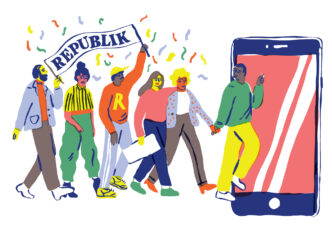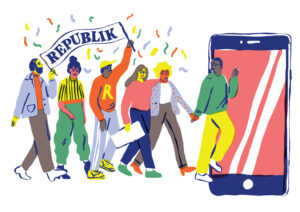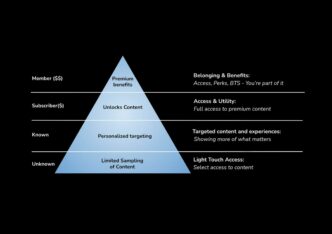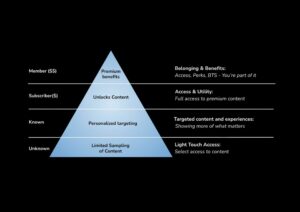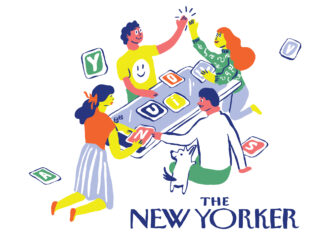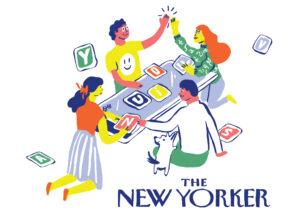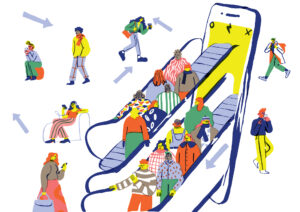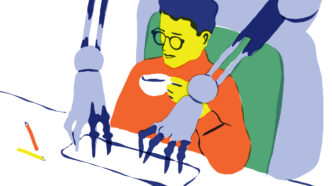
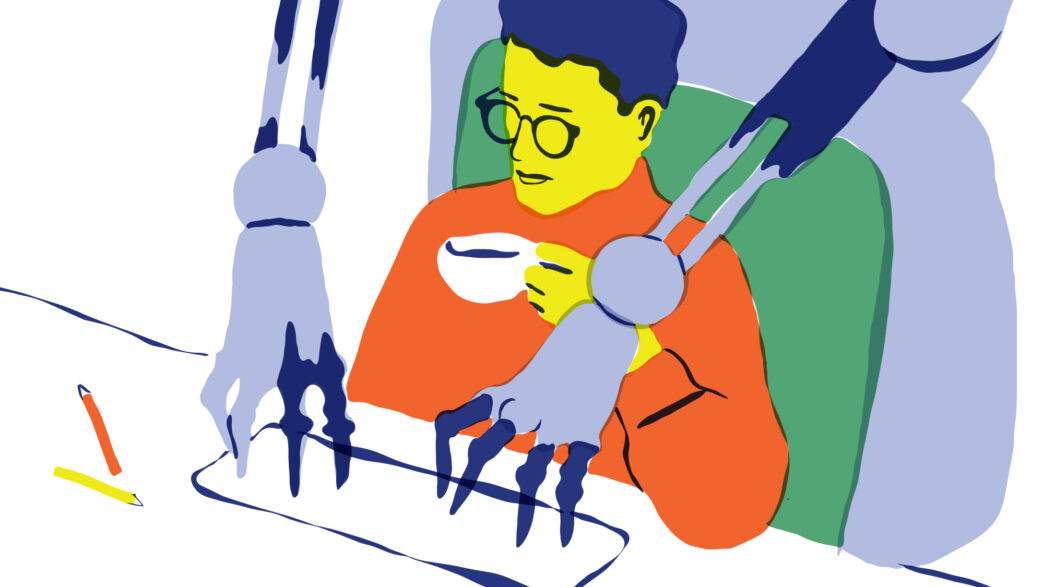
Talk about digital transformation! Germany’s Kölner Stadt-Anzeiger Medien is a publishing company born 400 years ago that now owns 3 newspapers and multiple radio stations. The company recently started writing a new chapter of its history thanks to its use of AI. Most notably, they have, since last summer, an AI bot writing articles and appearing in journalism conferences: Klara, a blond and blue eyed young woman who launched a year ago. I was intrigued with Klara and I wanted to understand more her impact in the newsroom. We caught up with Thomas Schultz-Homberg, CEO of the group, to understand how AI helps the group in its editorial and business strategies.
Hi Thomas! Thanks for taking the time to talk with me about AI. I first met Klara on one of your posts on LinkedIn. Can you tell me about her, and the idea leading to the creation of an AI journalist?
The idea behind Klara was to humanize AI in a way, because you can use a lot of GenAI models and clarify them at the bottom of the article but we thought a little further because it would be part of our daily reality to have an AI bot around us, a lot of surgery around you will be supported by AI and will be humanized by avatars like Klara is – it is easier to accept technology with human. Klara is a star. I have been with Klara to Copenhagen, Berlin, Vienna, Colorado. I will be around with Klara on a lot of occasions, but she is not only a star in the media bubble, but in the editorial because she is a colleague. If she was just a prompt interface in the CMS, without a face and identity, they would not have talked about it. Now they talk about Klara. In the conference, journalists say : it might be a topic for Klara.
That’s interesting. What would be a good story for Klara?
A good story for Klara is a story that is easy to research, not a lot of sources and investigation is easy, when there is a lot of data. We look for dense data sources, that we are sure, every story that needs a lot research and investigation is not a good story for Klara or any AI model, and we are not trying to replace real journalism and the real world for journalism, we try to replace our “easy” simple things just take a text from an agency and re-write it – something that humans don’t have to do it anymore
Tell me more about the tech behind Klara.
She is an AI model based mainly on OpenAI Chat GPT, in combination with Gemini, and then there are smaller more specialized GenAI models, which we make it complete. For example, if you write about certain topics that need a lot of specific knowledge : let’s say a special type of sports, we use it for her to let her write an article about winter sports – we have a model more effective on specialized topics.
Klara is integrated in our CMS, she is a native part of our CMS and the prompts that are done for her are stored in that interface so if somebody gives her an idea, about a football game, then you can look in the library if there is a prompt you an use and you don’t have to use it as an editor. This speeds up the time you spend with the prompt, which means that Klara is super fast.
> AI in the newsroom: 5 use cases to leverage AI in your operations
So Klara will work with an editor.
Yes, she has a companion editor, everyday is a different one, and the companion editor does the prompts. And there is the responsibility for humans. She is defining what sources she uses for articles, how she quotes people, saying something, we do not permit her to change any words and prompts have to be from certain sources. This is the responsibility of a human, as AI is not gonna be able to do it yet. It will change but for the time being you need a human. The editor checks the result and that it is ready to publish, if it needs refining a human will do it. I will be fully transparent, we have a link to Klara and a link to the companion editor so if you think you detect a mistake you can refer to the editor to give him a hint.
So Klara is – I presume – a productive journalist. What’s her impact?
Now she is more productive but at the beginning she was not. When you start an AI model, basically it is really stupid it takes a while to train an AI model. Editors were complaining that they had to rewrite everything, that changed very fast because she was learning very fast. We trained her with our archives. She knew what we write, our typical headlines, she learned very fast. Today she writes 11% of all the articles and depending on the season she stands for 8 – 12% of all traffic. It is super reliant what she writes, she is very productive in terms of catching, she makes better headlines. She gets so much traffic because of her headlines. She gets feedback, she is learning, her headlines and the humans admit, we have colleagues that ask Klara for a headline. We do AB testing of course and always have a control group of at least 10% of the audience who gets normal things if there was no AI, there is “old school” website that 10% audience gets, and then we measure if AI has an impact we never experienced a case where the figures have been worse than before. Using AI for recommendation of articles in the context of user journey leads to a 50% – 80% CTR increase.
That’s interesting. Klara is part of a broader effort to leverage AI in your newsrooms. Can you tell me more about how you use AI? I’ve worked as an editor and curator, and I have to say, it’s rather depressing to hear that the machine would have a better performance!
We value humane as well, 90% of our content is produced by humane, it is not the purpose to have 90% Language model. But the curation if the article is critical, if you write an article of opera, for example, more at the bottom of site – sports will be curated at the top. However, if AI detects you as an opera topic, what we do is display this story at a higher place for you. We deprioritize the sports section, because we detect you as a non-sports interest person. This is not an echo chamber: we don’t kill anything. Everything is still there. You have the news in a different order, this is why CTR increased so much (50-80%)
A German research shows that the average user flips 3 pages, and then quits if they don’t see anything of interest. So if we do the opera to the top, people will stay and it will be better for engagement. If they have a page view, they will find sports.
I like how you describe it. We went, in a way, from having the top editor building the front page to a front page that is tailored to users interest. Same pool of stories, but presented in a different way.
400 years of newspaper reading this is nothing new, people at home were separating them, that was selective reading over 100 years. Also, there is a big difference between the newspaper pages and digital screening on smartphones. We have 80% consumption on smartphones, desk and site and 20% most people see a smaller screen. Front page you have a lot of space to display the articles, which is why the curation is more important.
It is a different consumption than people gave the purpose of news consumption is driven by a kind of search, I look for a source I trust – we still have 50% direct traffic, and those people come because they want to know something and we make it easier for them to find something for them of interest : newspaper in the time was a lean back user, enjoy time reading with a coffee – you don’t do web to get inspired. It is very difficult to publish real quality content like we publish.
Let’s talk about revenue. For over two decades, the print media business models have been changing. For your print products, where does most of your revenue come from today? And how do you see it evolve?
We have had Print for 400 years – we closed down our printer, but we still have a circulation of 200,000 copies a day in a region of 3 M habitants – so this is still pretty good if you compare it to Germany. The print is still our main business in terms of revenue. But it is a dying business, and we are moving forward on AI field, because we think we must use the time to establish a sustainable business.
The challenge on the digital is to make people pay. I have done the whole internet journey in my career, and all the stories, even the hero stories are not true. Look at The New York Times: they celebrate their millions of subscribers, but they don’t mention how many of them just pay 50 cents! Advertising is still the most promising avenue.
Thomas, I really appreciate the chat. Before we go, I’d also love to ask you what you found the most challenging in bringing AI to your newsrooms. It is obviously a major cultural shift, and not an easy one, I assume.
It was harder that you might imagine. We separated the new business from the legacy we divided they developed independence from each other they don’t have to look after each other when they make a decision. Biggest challenge: make people accept the obvious, that the digital is a different product from the traditional print, the socio-demographics are different, the purposes are different, the business model is different, that is hard to make people accept what they see in the mirror. It took a lot of discussion, we have a tool on their smartphone that helps you understand digital models. We have sessions with me as the CEO teaching formats. We do a lot of education.

